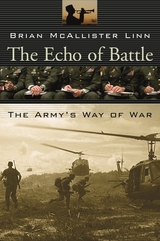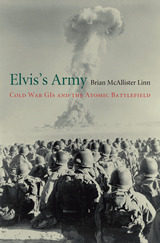
Today's protracted asymmetrical conflicts confuse efforts to measure progress, often inviting politics and wishful thinking to replace objective evaluation.
In Assessing War, military historians, social scientists, and military officers explore how observers have analyzed the trajectory of war in American conflicts from the Seven Years’ War through the war in Afghanistan. Drawing on decades of acquired expertise, the contributors examine wartime assessment in both theory and practice and, through alternative dimensions of assessment such as justice and proportionality, the war of ideas and economics. This group of distinguished authors grapples with both conventional and irregular wars and emerging aspects of conflict—such as cyberwar and nation building—that add to the complexities of the modern threat environment. The volume ends with recommendations for practitioners on best approaches while offering sobering conclusions about the challenges of assessing war without politicization or self-delusion.
Covering conflicts from the eighteenth century to today, Assessing War blends focused advice and a uniquely broad set of case studies to ponder vital questions about warfare's past—and its future. The book includes a foreword by Gen. George W. Casey Jr. (USA, Ret.), former chief of staff of the US Army and former commander, Multi-National Force–Iraq.

From Lexington and Gettysburg to Normandy and Iraq, the wars of the United States have defined the nation. But after the guns fall silent, the army searches the lessons of past conflicts in order to prepare for the next clash of arms. In the echo of battle, the army develops the strategies, weapons, doctrine, and commanders that it hopes will guarantee a future victory.
In the face of radically new ways of waging war, Brian Linn surveys the past assumptions--and errors--that underlie the army's many visions of warfare up to the present day. He explores the army's forgotten heritage of deterrence, its long experience with counter-guerrilla operations, and its successive efforts to transform itself. Distinguishing three martial traditions--each with its own concept of warfare, its own strategic views, and its own excuses for failure--he locates the visionaries who prepared the army for its battlefield triumphs and the reactionaries whose mistakes contributed to its defeats.
Discussing commanders as diverse as Dwight D. Eisenhower, George S. Patton, and Colin Powell, and technologies from coastal artillery to the Abrams tank, he shows how leadership and weaponry have continually altered the army's approach to conflict. And he demonstrates the army's habit of preparing for wars that seldom occur, while ignoring those it must actually fight. Based on exhaustive research and interviews, The Echo of Battle provides an unprecedented reinterpretation of how the U.S. Army has waged war in the past and how it is meeting the new challenges of tomorrow.

When the U.S. Army drafted Elvis Presley in 1958, it quickly set about transforming the King of Rock and Roll from a rebellious teen idol into a clean-cut GI. Trading in his gold-trimmed jacket for standard-issue fatigues, Elvis became a model soldier in an army facing the unprecedented challenge of building a fighting force for the Atomic Age.
In an era that threatened Soviet-American thermonuclear annihilation, the army declared it could limit atomic warfare to the battlefield. It not only adopted a radically new way of fighting but also revamped its equipment, organization, concepts, and training practices. From massive garrisons in Germany and Korea to nuclear tests to portable atomic weapons, the army reinvented itself. Its revolution in warfare required an equal revolution in personnel: the new army needed young officers and soldiers who were highly motivated, well trained, and technologically adept. Drafting Elvis demonstrated that even this icon of youth culture was not too cool to wear the army’s uniform.
The army of the 1950s was America’s most racially and economically egalitarian institution, providing millions with education, technical skills, athletics, and other opportunities. With the cooperation of both the army and the media, military service became a common theme in television, music, and movies, and part of this generation’s identity. Brian Linn traces the origins, evolution, and ultimate failure of the army’s attempt to transform itself for atomic warfare, revealing not only the army’s vital role in creating Cold War America but also the experiences of its forgotten soldiers.
READERS
Browse our collection.
PUBLISHERS
See BiblioVault's publisher services.
STUDENT SERVICES
Files for college accessibility offices.
UChicago Accessibility Resources
home | accessibility | search | about | contact us
BiblioVault ® 2001 - 2024
The University of Chicago Press









